Blog
Our Top Blog Posts
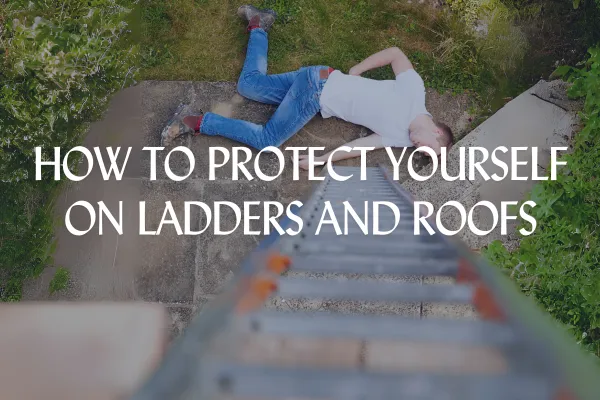
How to Protect Yourself on Ladders and Roofs
In the world of professional Christmas light installation, safety should always be the top priority. The nature of our work often involves working at heights, dealing with electrical components, and operating in challenging environments, all of which pose potential risks. Recent incidents in the industry have brought to light the critical need for adhering to stringent safety protocols. These incidents serve as poignant reminders that safety should never be compromised. In this comprehensive blog post, we will delve into the essential aspects of safety in Christmas light installation, focusing on ladder safety, the importance of proper equipment, and strategies for preventing potentially life-altering accidents.
The Paramount Importance of Safety
The paramount importance of prioritizing safety in our line of work cannot be overstated. Accidents can happen in the blink of an eye and can have devastating consequences. From ladder falls to electrical shocks, the potential for serious injury is ever-present in our industry. As professionals, it is our responsibility to ensure that we are taking every possible precaution to protect ourselves, our teams, and our clients from harm.
The consequences of neglecting safety can be far-reaching. Beyond the immediate physical injuries, accidents can result in lost work time, increased insurance premiums, and damage to a company's reputation. In extreme cases, they can even lead to legal liabilities and the loss of life. It is for these reasons that safety must always be at the forefront of everything we do.
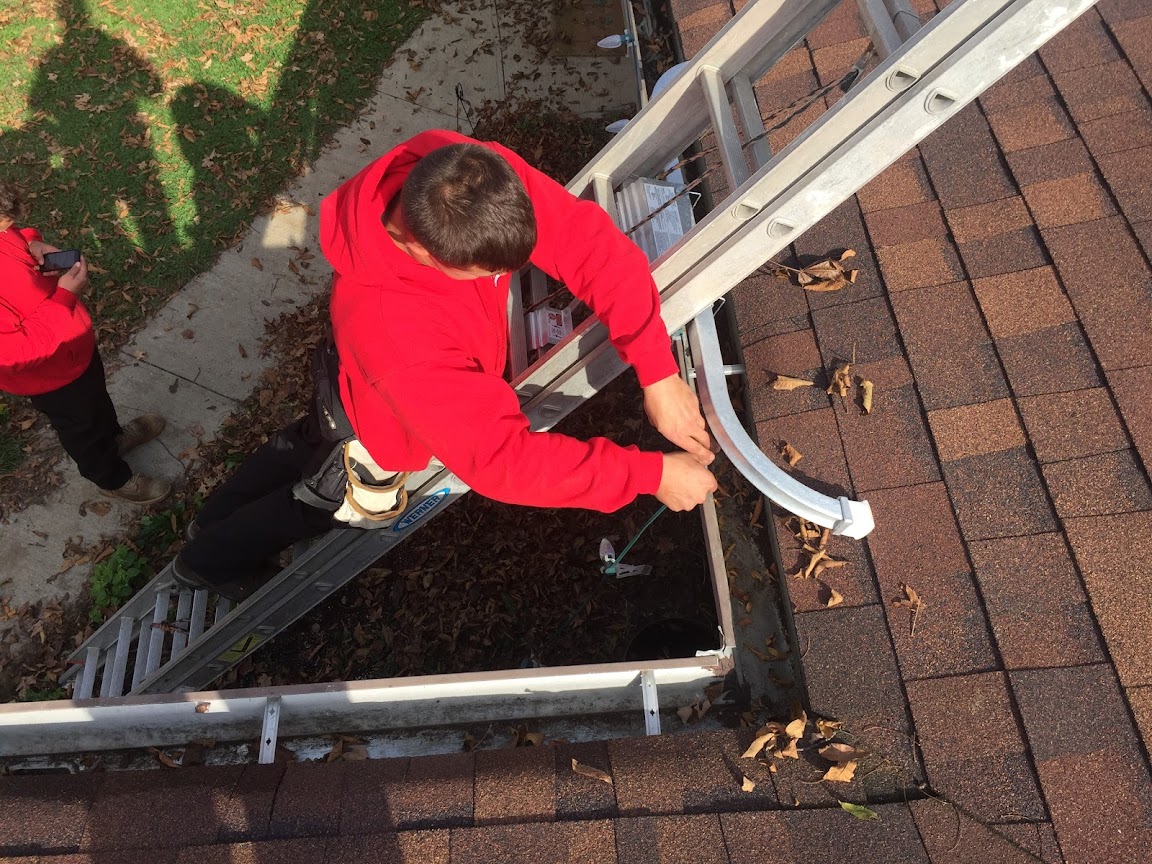
Critical Safety Measures
To ensure safety in Christmas light installation, there are several critical measures that must be implemented:
1. Ladder Safety
Ladders are essential tools for Christmas light installers, but they can also be extremely dangerous if not used properly. According to the American Ladder Institute, there are over 300 ladder-related deaths and 130,000 emergency room visits each year in the United States alone. To ensure ladder safety:
- Always position the ladder on a stable, level surface and at a 75-degree angle. A quick way to check this is by extending your arms straight out; the ladder's rung should be within reach.
- Use ladder stabilizers or standoffs to prevent the ladder from slipping or shifting. These devices increase the ladder's contact with the surface, providing added stability.
- When working on uneven surfaces, have someone foot the ladder. This means placing one foot on a rung to stabilize the ladder while you're climbing.
- Regularly inspect your ladders for any signs of damage or wear. If a ladder has bent rungs, broken locks, or is generally unstable, replace it immediately.
- Always maintain three points of contact with the ladder (two feet and one hand or two hands and one foot) when climbing or descending.
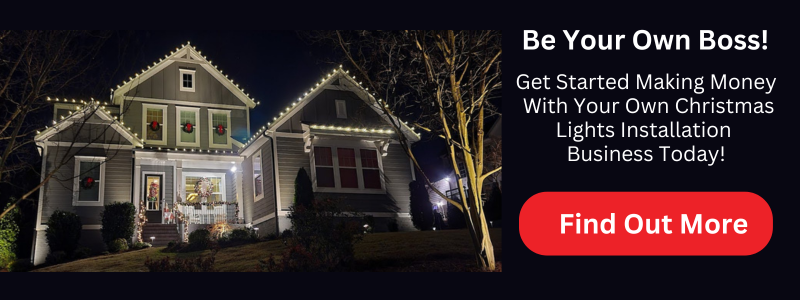
2. Investing in the Right Equipment
Having the right equipment is crucial for ensuring safety in Christmas light installation. Investing in high-quality, professional-grade equipment can make a significant difference in preventing accidents. Some essential tools include:
- Safety harnesses and fall arrest systems: These devices allow you to securely attach yourself to a stable anchor point, drastically reducing the risk of falls.
- Non-slip footwear: Specialty shoes like Cougar Paws provide better grip on slippery surfaces like wet roofs, minimizing the risk of slips and falls.
- Ladder levelers and stabilizers: These devices ensure that your ladder remains stable on uneven ground or when leaning against a surface.
- Electrical safety equipment: When working with Christmas lights or other electrical components, always use properly rated extension cords, ground fault circuit interrupters (GFCIs), and insulated tools to prevent electrical shocks.
Investing in high-quality safety equipment may seem like an added expense, but it is a necessary investment in the well-being of yourself, your team, and your clients. Skimping on safety equipment is never worth the risk.
3. Comprehensive Training and Protocols
Providing comprehensive training to your team on safety protocols is absolutely essential. Regular training sessions and safety drills can make a significant difference in preventing accidents. Some effective training strategies include:
- Having your team watch instructional videos followed by practical, hands-on training to ensure they understand and can apply the safety measures accurately.
- Conducting regular safety meetings to review protocols, discuss any new safety concerns, and reinforce the importance of safety on every job.
- Implementing a buddy system where team members work in pairs and actively look out for each other's safety.
- Providing ongoing training to keep skills sharp and ensure that safety remains top-of-mind.
In addition to training, it's essential to have clear, written safety protocols in place. These protocols should cover everything from proper equipment setup and use to emergency response procedures. By having a well-defined set of safety protocols, you can ensure that everyone on your team is on the same page when it comes to safety.
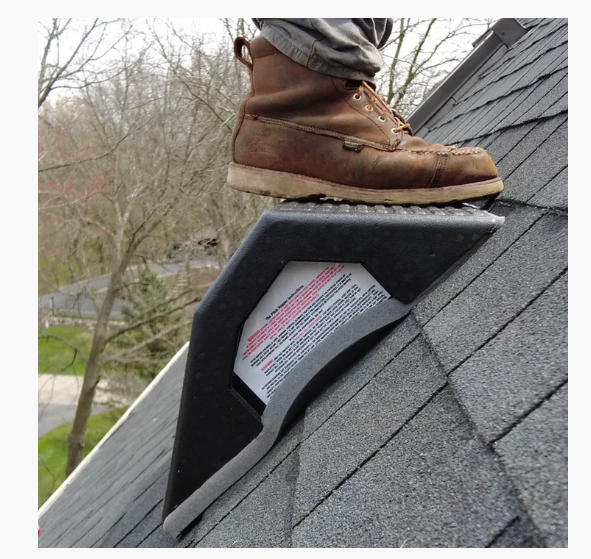
Learning from Experience
In the Christmas light installation industry, learning from experience is crucial. Every close call or accident, whether it happens to us personally or to someone else in the industry, serves as a powerful reminder of the importance of safety. By reflecting on these incidents, we can identify areas for improvement and develop better practices to avoid similar situations in the future. Some key lessons include:
- Never rush or take shortcuts: Haste can lead to overlooking crucial safety checks. Always take the time to properly set up equipment, assess potential hazards, and follow all safety protocols, even if it means a job takes a bit longer.
- Be mindful of fatigue and environmental conditions: Exhaustion, heat stress, and cold can all impair judgment and increase the risk of accidents. Encourage your team to take regular breaks, stay hydrated, and dress appropriately for the weather conditions.
- Constantly assess and reassess risks: Job sites are dynamic environments where conditions can change quickly. Always be on the lookout for new hazards and adjust your safety plan accordingly.
- Foster a culture of safety: Encourage open communication about safety concerns and empower every team member to speak up if they see something unsafe. Make safety a core value of your company culture.
By learning from experience and continually improving our safety practices, we can minimize the risk of accidents and create a safer work environment for everyone.
The Role of Pricing in Safety
Pricing our services appropriately is not just about profitability; it also plays a crucial role in safety. When we price our services competitively, we have the financial resources to invest in high-quality safety equipment, comprehensive training programs, and adequate insurance coverage. Underpricing our services can lead to cutting corners, which often manifests in compromised safety standards.
It's important to remember that premium pricing reflects the value of professional service coupled with a steadfast commitment to safety. By charging appropriate rates, we can ensure that we have the resources necessary to prioritize safety in every aspect of our work. Clients who understand the importance of safety will appreciate the value of a company that invests in its team's well-being and prioritizes accident prevention.
In the world of Christmas light installation, safety is not just a priority—it's an absolute necessity. The potential for serious accidents is always present in our line of work, making it crucial that we prioritize safety above all else.
By focusing on ladder safety, investing in proper equipment, providing comprehensive training, implementing clear safety protocols, learning from experience, and charging appropriate rates, we can create a culture of safety within our industry. We must never forget that no job is worth compromising our well-being or the safety of our teams and clients.
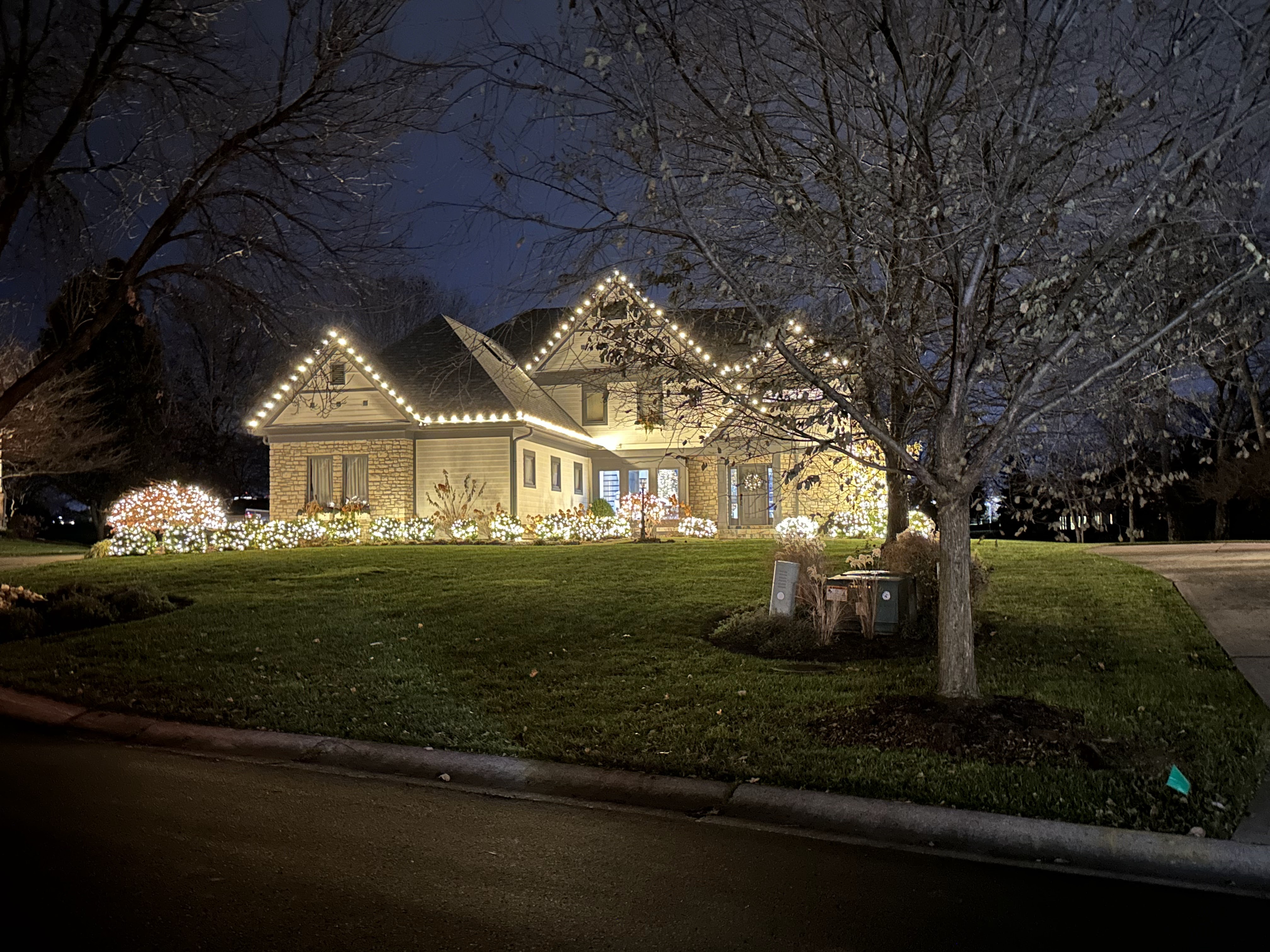
As professionals, it is our responsibility to lead by example and to always put safety first. By doing so, we not only protect ourselves and our teams but also enhance the overall professionalism and reliability of our services. We owe it to ourselves, our families, and our clients to make safety our top priority on every job.
Remember: stay vigilant, prioritize safety at all times, and never forget that your life and well-being are always more important than any job. By keeping safety at the forefront of everything we do, we can ensure that our industry remains a safe and thriving one for years to come.
Additional Resources
For those looking to learn more about safety in Christmas light installation, here are some additional resources:
- The Occupational Safety and Health Administration (OSHA) provides guidelines and regulations for ladder safety, fall protection, and electrical safety.
- The Christmas Light Installation Pros Association (CLIPA) offers training and certification programs specifically tailored to the unique safety concerns of Christmas light installation.
- The American Ladder Institute (ALI) provides a variety of ladder safety resources, including training materials and safety tips.
By taking advantage of these resources and continually educating ourselves on best safety practices, we can ensure that our industry remains a safe and thriving one for years to come. Remember, safety is not just a box to check off—it's a mindset that should permeate every aspect of our work. By prioritizing safety above all else, we can protect ourselves, our teams, and our clients while setting the standard for professionalism and reliability in our industry.

1. Q: Why is ladder safety so important in Christmas light installation?
A: Ladder safety is crucial because falls from ladders are one of the most common causes of serious injuries and fatalities in the Christmas light installation industry. Proper ladder setup, use, and maintenance can significantly reduce the risk of accidents.
2. Q: What are some key steps to ensure ladder safety?
A: Key steps include positioning the ladder at a stable 75-degree angle, using stabilizers or standoffs, having someone foot the ladder on uneven surfaces, maintaining three points of contact, and regularly inspecting the ladder for damage.
3. Q: How can investing in the right equipment improve safety?
A: Investing in high-quality, professional-grade safety equipment such as safety harnesses, non-slip footwear, ladder levelers, and electrical safety gear can significantly reduce the risk of accidents by providing added protection and stability.
4. Q: What role does training play in promoting safety?
A: Comprehensive safety training is essential for ensuring that all team members understand and can properly apply safety protocols. Regular training sessions, hands-on practice, and ongoing reinforcement can help create a strong culture of safety.
5. Q: How can learning from experience improve safety practices?
A: By reflecting on close calls, accidents, and the experiences of others in the industry, we can identify areas for improvement, develop better practices, and stay vigilant in preventing similar incidents in the future.
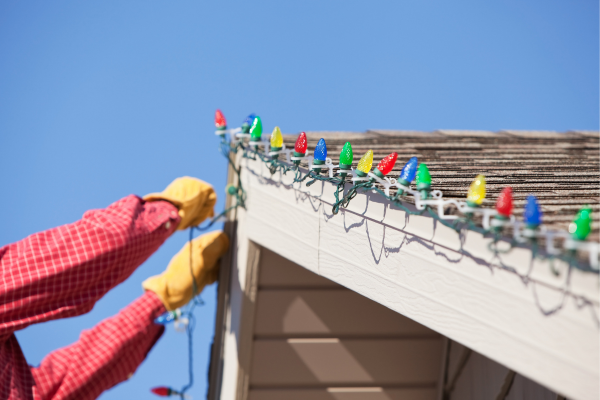
6. Q: What is the connection between pricing and safety?
A: Pricing services appropriately allows companies to invest in high-quality safety equipment, comprehensive training, and adequate insurance coverage. Underpricing can lead to cutting corners and compromised safety standards.
7. Q: How can companies foster a culture of safety?
A: Companies can foster a safety culture by making safety a core value, encouraging open communication about safety concerns, empowering team members to speak up about unsafe practices, and leading by example.
8. Q: What should be included in a company's safety protocols?
A: Safety protocols should cover all aspects of the job, from proper equipment setup and use to emergency response procedures. Having clear, written protocols ensures that all team members are on the same page when it comes to safety.
9. Q: How can fatigue and environmental conditions impact safety?
A: Fatigue, heat stress, and cold can impair judgment and increase the risk of accidents. It's important to encourage regular breaks, proper hydration, and appropriate clothing to mitigate these risks.
10. Q: What resources are available for learning more about safety in Christmas light installation?
A: Organizations such as the Occupational Safety and Health Administration (OSHA), Christmas Light Installation Pros Association (CLIPA), and American Ladder Institute (ALI) offer a variety of safety resources, guidelines, and training programs specific to the Christmas light installation industry.




How to Protect Yourself on Ladders and Roofs
In the world of professional Christmas light installation, safety should always be the top priority. The nature of our work often involves working at heights, dealing with electrical components, and operating in challenging environments, all of which pose potential risks. Recent incidents in the industry have brought to light the critical need for adhering to stringent safety protocols. These incidents serve as poignant reminders that safety should never be compromised. In this comprehensive blog post, we will delve into the essential aspects of safety in Christmas light installation, focusing on ladder safety, the importance of proper equipment, and strategies for preventing potentially life-altering accidents.
The Paramount Importance of Safety
The paramount importance of prioritizing safety in our line of work cannot be overstated. Accidents can happen in the blink of an eye and can have devastating consequences. From ladder falls to electrical shocks, the potential for serious injury is ever-present in our industry. As professionals, it is our responsibility to ensure that we are taking every possible precaution to protect ourselves, our teams, and our clients from harm.
The consequences of neglecting safety can be far-reaching. Beyond the immediate physical injuries, accidents can result in lost work time, increased insurance premiums, and damage to a company's reputation. In extreme cases, they can even lead to legal liabilities and the loss of life. It is for these reasons that safety must always be at the forefront of everything we do.

Critical Safety Measures
To ensure safety in Christmas light installation, there are several critical measures that must be implemented:
1. Ladder Safety
Ladders are essential tools for Christmas light installers, but they can also be extremely dangerous if not used properly. According to the American Ladder Institute, there are over 300 ladder-related deaths and 130,000 emergency room visits each year in the United States alone. To ensure ladder safety:
- Always position the ladder on a stable, level surface and at a 75-degree angle. A quick way to check this is by extending your arms straight out; the ladder's rung should be within reach.
- Use ladder stabilizers or standoffs to prevent the ladder from slipping or shifting. These devices increase the ladder's contact with the surface, providing added stability.
- When working on uneven surfaces, have someone foot the ladder. This means placing one foot on a rung to stabilize the ladder while you're climbing.
- Regularly inspect your ladders for any signs of damage or wear. If a ladder has bent rungs, broken locks, or is generally unstable, replace it immediately.
- Always maintain three points of contact with the ladder (two feet and one hand or two hands and one foot) when climbing or descending.

2. Investing in the Right Equipment
Having the right equipment is crucial for ensuring safety in Christmas light installation. Investing in high-quality, professional-grade equipment can make a significant difference in preventing accidents. Some essential tools include:
- Safety harnesses and fall arrest systems: These devices allow you to securely attach yourself to a stable anchor point, drastically reducing the risk of falls.
- Non-slip footwear: Specialty shoes like Cougar Paws provide better grip on slippery surfaces like wet roofs, minimizing the risk of slips and falls.
- Ladder levelers and stabilizers: These devices ensure that your ladder remains stable on uneven ground or when leaning against a surface.
- Electrical safety equipment: When working with Christmas lights or other electrical components, always use properly rated extension cords, ground fault circuit interrupters (GFCIs), and insulated tools to prevent electrical shocks.
Investing in high-quality safety equipment may seem like an added expense, but it is a necessary investment in the well-being of yourself, your team, and your clients. Skimping on safety equipment is never worth the risk.
3. Comprehensive Training and Protocols
Providing comprehensive training to your team on safety protocols is absolutely essential. Regular training sessions and safety drills can make a significant difference in preventing accidents. Some effective training strategies include:
- Having your team watch instructional videos followed by practical, hands-on training to ensure they understand and can apply the safety measures accurately.
- Conducting regular safety meetings to review protocols, discuss any new safety concerns, and reinforce the importance of safety on every job.
- Implementing a buddy system where team members work in pairs and actively look out for each other's safety.
- Providing ongoing training to keep skills sharp and ensure that safety remains top-of-mind.
In addition to training, it's essential to have clear, written safety protocols in place. These protocols should cover everything from proper equipment setup and use to emergency response procedures. By having a well-defined set of safety protocols, you can ensure that everyone on your team is on the same page when it comes to safety.

Learning from Experience
In the Christmas light installation industry, learning from experience is crucial. Every close call or accident, whether it happens to us personally or to someone else in the industry, serves as a powerful reminder of the importance of safety. By reflecting on these incidents, we can identify areas for improvement and develop better practices to avoid similar situations in the future. Some key lessons include:
- Never rush or take shortcuts: Haste can lead to overlooking crucial safety checks. Always take the time to properly set up equipment, assess potential hazards, and follow all safety protocols, even if it means a job takes a bit longer.
- Be mindful of fatigue and environmental conditions: Exhaustion, heat stress, and cold can all impair judgment and increase the risk of accidents. Encourage your team to take regular breaks, stay hydrated, and dress appropriately for the weather conditions.
- Constantly assess and reassess risks: Job sites are dynamic environments where conditions can change quickly. Always be on the lookout for new hazards and adjust your safety plan accordingly.
- Foster a culture of safety: Encourage open communication about safety concerns and empower every team member to speak up if they see something unsafe. Make safety a core value of your company culture.
By learning from experience and continually improving our safety practices, we can minimize the risk of accidents and create a safer work environment for everyone.
The Role of Pricing in Safety
Pricing our services appropriately is not just about profitability; it also plays a crucial role in safety. When we price our services competitively, we have the financial resources to invest in high-quality safety equipment, comprehensive training programs, and adequate insurance coverage. Underpricing our services can lead to cutting corners, which often manifests in compromised safety standards.
It's important to remember that premium pricing reflects the value of professional service coupled with a steadfast commitment to safety. By charging appropriate rates, we can ensure that we have the resources necessary to prioritize safety in every aspect of our work. Clients who understand the importance of safety will appreciate the value of a company that invests in its team's well-being and prioritizes accident prevention.
In the world of Christmas light installation, safety is not just a priority—it's an absolute necessity. The potential for serious accidents is always present in our line of work, making it crucial that we prioritize safety above all else.
By focusing on ladder safety, investing in proper equipment, providing comprehensive training, implementing clear safety protocols, learning from experience, and charging appropriate rates, we can create a culture of safety within our industry. We must never forget that no job is worth compromising our well-being or the safety of our teams and clients.

As professionals, it is our responsibility to lead by example and to always put safety first. By doing so, we not only protect ourselves and our teams but also enhance the overall professionalism and reliability of our services. We owe it to ourselves, our families, and our clients to make safety our top priority on every job.
Remember: stay vigilant, prioritize safety at all times, and never forget that your life and well-being are always more important than any job. By keeping safety at the forefront of everything we do, we can ensure that our industry remains a safe and thriving one for years to come.
Additional Resources
For those looking to learn more about safety in Christmas light installation, here are some additional resources:
- The Occupational Safety and Health Administration (OSHA) provides guidelines and regulations for ladder safety, fall protection, and electrical safety.
- The Christmas Light Installation Pros Association (CLIPA) offers training and certification programs specifically tailored to the unique safety concerns of Christmas light installation.
- The American Ladder Institute (ALI) provides a variety of ladder safety resources, including training materials and safety tips.
By taking advantage of these resources and continually educating ourselves on best safety practices, we can ensure that our industry remains a safe and thriving one for years to come. Remember, safety is not just a box to check off—it's a mindset that should permeate every aspect of our work. By prioritizing safety above all else, we can protect ourselves, our teams, and our clients while setting the standard for professionalism and reliability in our industry.

1. Q: Why is ladder safety so important in Christmas light installation?
A: Ladder safety is crucial because falls from ladders are one of the most common causes of serious injuries and fatalities in the Christmas light installation industry. Proper ladder setup, use, and maintenance can significantly reduce the risk of accidents.
2. Q: What are some key steps to ensure ladder safety?
A: Key steps include positioning the ladder at a stable 75-degree angle, using stabilizers or standoffs, having someone foot the ladder on uneven surfaces, maintaining three points of contact, and regularly inspecting the ladder for damage.
3. Q: How can investing in the right equipment improve safety?
A: Investing in high-quality, professional-grade safety equipment such as safety harnesses, non-slip footwear, ladder levelers, and electrical safety gear can significantly reduce the risk of accidents by providing added protection and stability.
4. Q: What role does training play in promoting safety?
A: Comprehensive safety training is essential for ensuring that all team members understand and can properly apply safety protocols. Regular training sessions, hands-on practice, and ongoing reinforcement can help create a strong culture of safety.
5. Q: How can learning from experience improve safety practices?
A: By reflecting on close calls, accidents, and the experiences of others in the industry, we can identify areas for improvement, develop better practices, and stay vigilant in preventing similar incidents in the future.

6. Q: What is the connection between pricing and safety?
A: Pricing services appropriately allows companies to invest in high-quality safety equipment, comprehensive training, and adequate insurance coverage. Underpricing can lead to cutting corners and compromised safety standards.
7. Q: How can companies foster a culture of safety?
A: Companies can foster a safety culture by making safety a core value, encouraging open communication about safety concerns, empowering team members to speak up about unsafe practices, and leading by example.
8. Q: What should be included in a company's safety protocols?
A: Safety protocols should cover all aspects of the job, from proper equipment setup and use to emergency response procedures. Having clear, written protocols ensures that all team members are on the same page when it comes to safety.
9. Q: How can fatigue and environmental conditions impact safety?
A: Fatigue, heat stress, and cold can impair judgment and increase the risk of accidents. It's important to encourage regular breaks, proper hydration, and appropriate clothing to mitigate these risks.
10. Q: What resources are available for learning more about safety in Christmas light installation?
A: Organizations such as the Occupational Safety and Health Administration (OSHA), Christmas Light Installation Pros Association (CLIPA), and American Ladder Institute (ALI) offer a variety of safety resources, guidelines, and training programs specific to the Christmas light installation industry.



Copyright ©2025 All Right Reserved website designed by christmaslights.io
Terms of Service / Privacy Policy
Have questions or need assistance?
Contact us at (855)619-LITE


